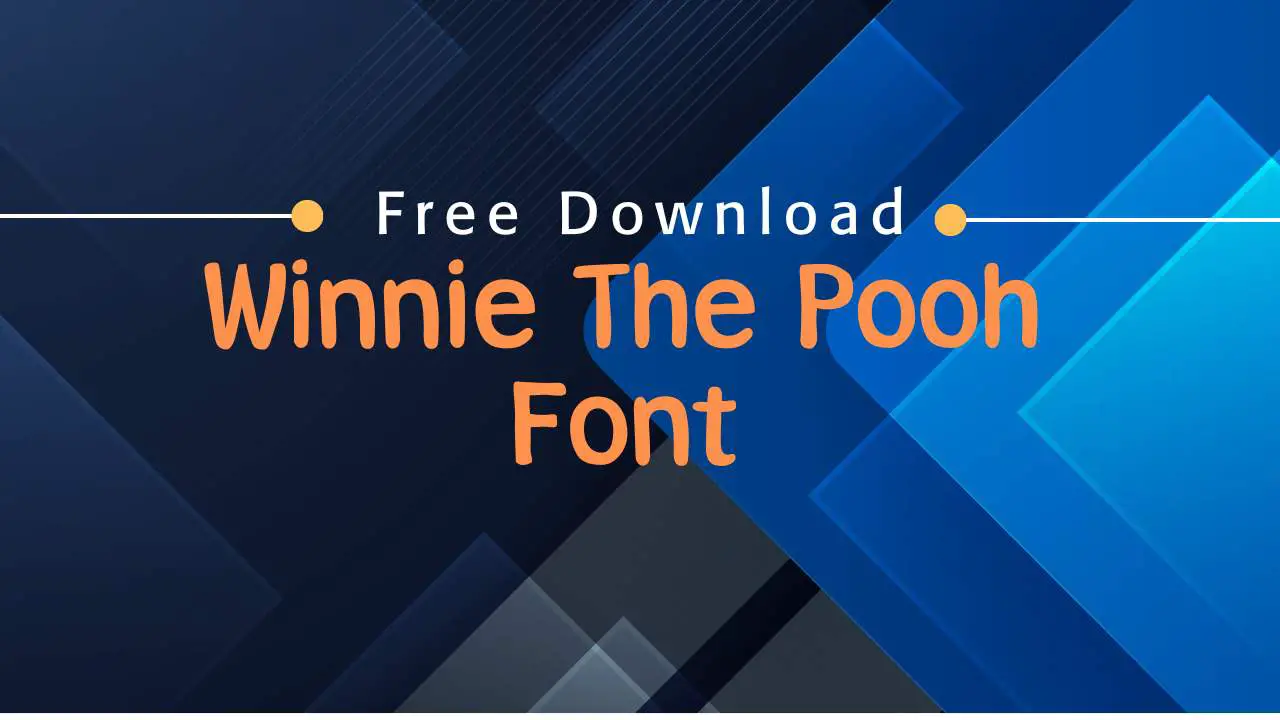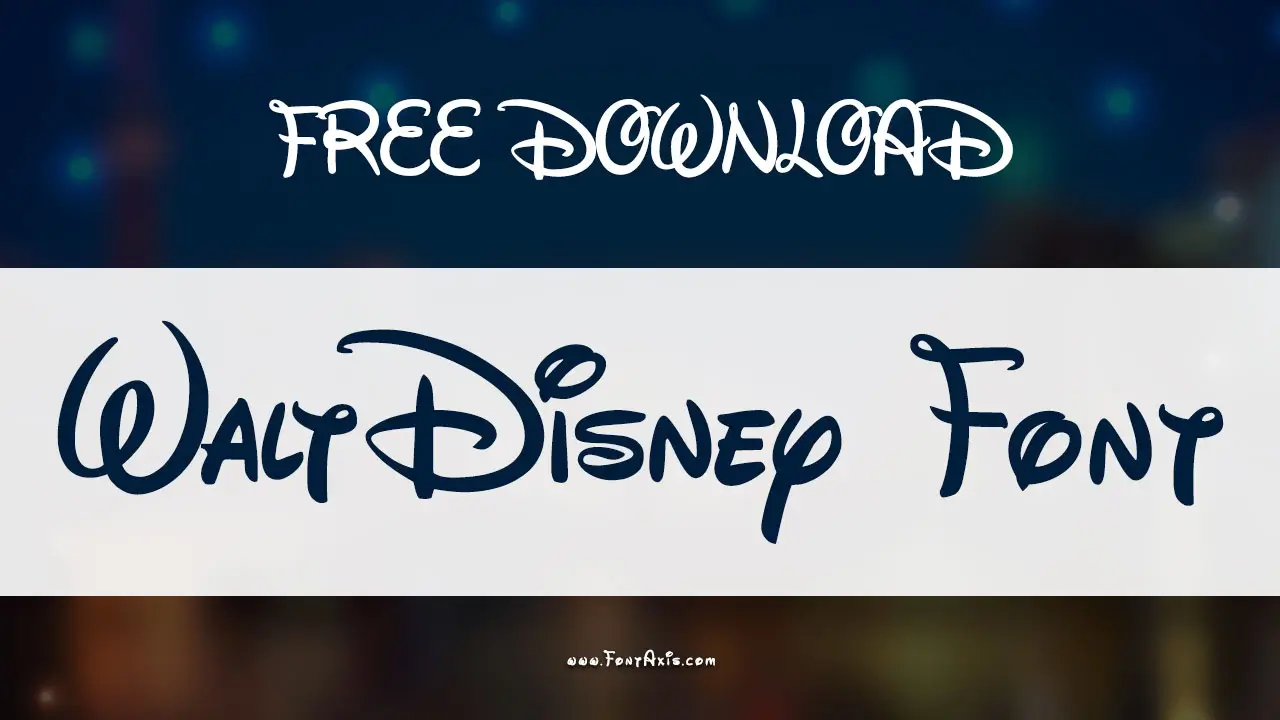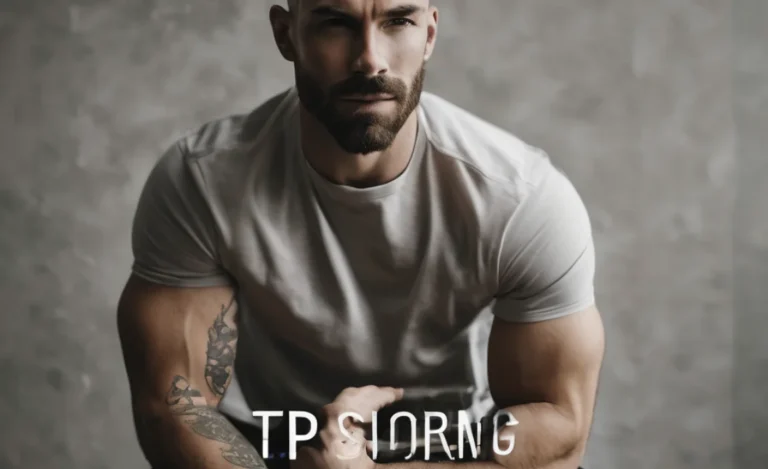The Pooh Font, popularly known as the Winnie the Pooh Font, captures the playful and nostalgic essence of A. A. Milne’s beloved fictional character, Winnie the Pooh. First introduced in the 1920s, Pooh’s adventures in the Hundred Acre Wood have inspired designs in books, logos, and advertisements. This cartoonish typeface is perfect for kid-friendly and creative projects.
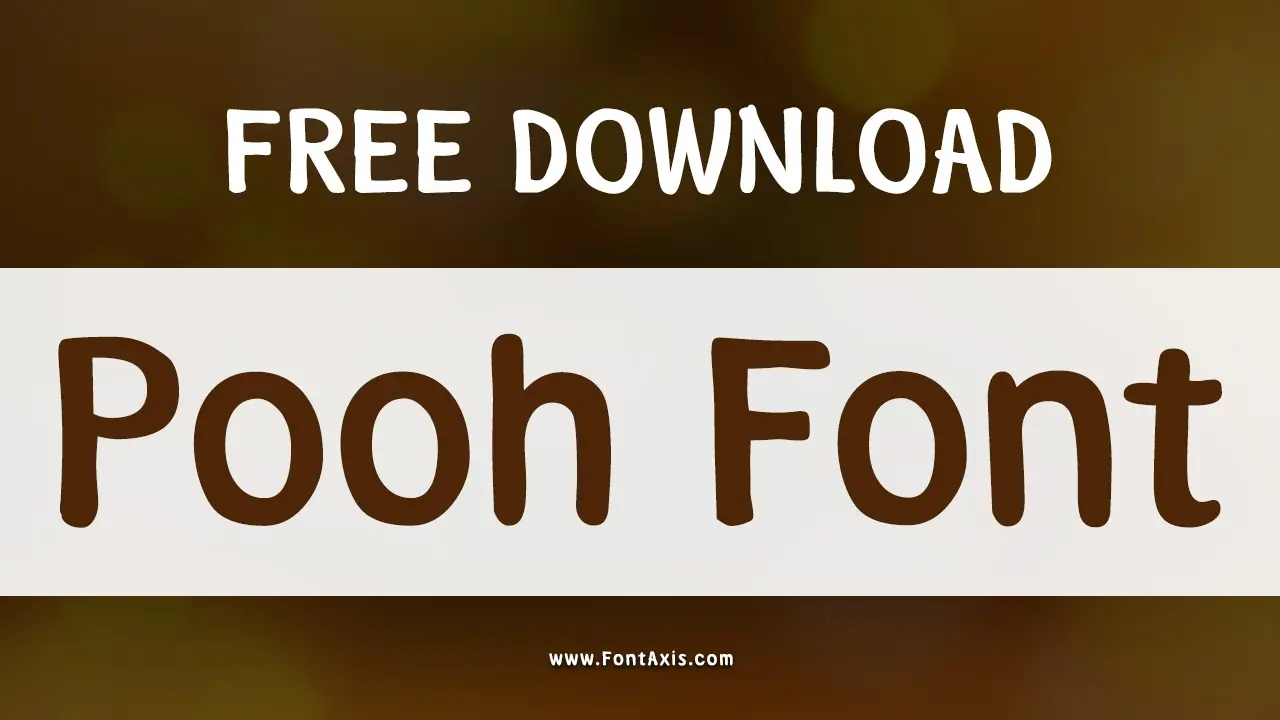
Pooh Font Information
| Name | Pooh Font (Winnie the Pooh Font) |
| Style | Cartoon, Sans Serif |
| Designer | Walt Disney Animation Studios |
| File Format | OTF, TTF, WOFF |
| License | Free for personal use; commercial license required |
| Type | Display Typeface |
Pooh Font Family Includes
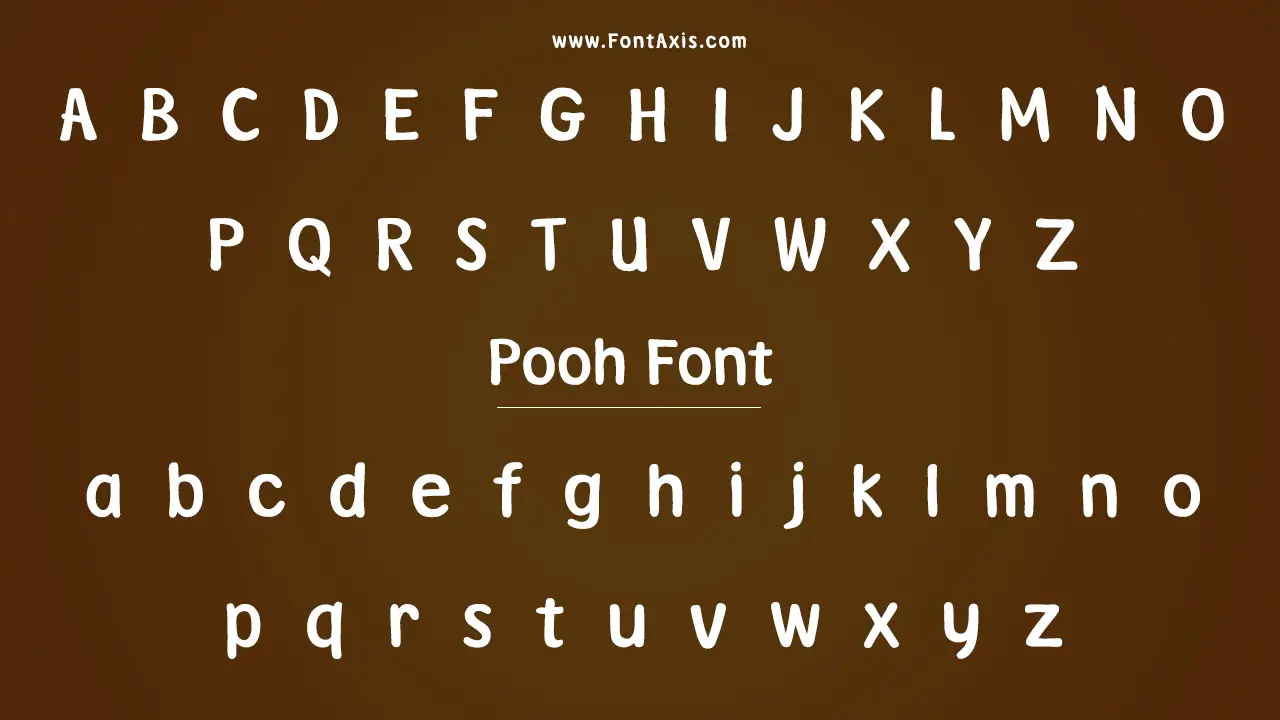
- Pooh Regular
- Pooh Italic
- Pooh Bold
- Pooh Bold Italic
Where Pooh Font Is In Use
- Children’s books and story designs
- Logo creation, including the Winnie the Pooh logo
- Poster designs for events, advertising, and kids’ media
- Wedding designs with a playful or nostalgic theme
- Merchandise branding for toys, clothing, and related products
Similar Fonts
- Pokemon Font
- Super Mario Font
- Grobold Font
- Naughty Cartoon Font
- Multicolore Font
- Odin-Bold Font
- Classic Robot Bold Font
Best Font Pairing
- Roboto: Modern and clean for body text
- Grobold: For combining playful headings with structured design
How To Download And Install Pooh Font
- Download: Visit trusted font websites like FontBolt or Dafont.
- Extract: Unzip the downloaded font file.
- Install:
- Windows: Right-click the file and select Install.
- Mac: Double-click the file and click Install Font.
- Use: Open your design software, and the font will be ready for use.
Conclusion
The Pooh Font embodies the charm and innocence of the Winnie the Pooh series, making it an excellent choice for cartoon-inspired designs, logos, and children’s media. With its whimsical style and broad usability in creative projects, it’s a delightful way to bring nostalgia and fun to your work. For commercial use, ensure you acquire the proper licensing.
FAQs
1.Is Pooh Font Free For Commercial Use?
No, the Pooh Font is free for personal use only. If you want to use it for commercial projects such as logos, branding, merchandise, or any profit-driven materials, You will need to obtain a commercial license. You can contact the designer directly to discuss licensing options, terms, and pricing. This ensures that you are using the font legally and respecting the designer’s intellectual property.
2.What File Formats Does Pooh Font Support?
The Pooh Font is available in several formats, making it highly versatile for different design tools. It supports OTF (OpenType Font), TTF (TrueType Font), and WOFF (Web Open Font Format). This allows you to use it in various software, including Adobe Illustrator, Photoshop, Microsoft Word, and even web design tools. The WOFF format ensures you can easily implement it for use on websites or other online applications.
3.Can I Use Pooh Font For Wedding Designs?
Yes, the Pooh Font is perfect for nostalgic wedding designs and can be used for kid-themed wedding projects. Its playful and whimsical style brings a touch of lighthearted fun to invitations, signs, and other wedding stationery. Pooh Font can add a charming, playful vibe to your wedding designs. It is particularly great for vintage or Disney-inspired themes.
4.Does The Pooh Font Support Cyrillic Or Arabic Characters?
No, the Pooh Font primarily supports Latin-based characters, meaning it includes the basic English alphabet, numbers, and punctuation. However, it does not support Cyrillic, Arabic, or other non-Latin character sets. If you need a font that supports these languages, look for a different typeface or a font that specifically supports extended character sets.
5.What Are Related Products Or Fonts For Similar Projects?
If you like the whimsical and playful style of Pooh Font, there are several similar fonts you can consider for related design projects:
- Grobold: A fun, chunky font with a playful, bold style, great for cartoons or children’s designs.
- Honey Script: A cursive and friendly font that shares a lighthearted and informal vibe.
- Comic Sans: A classic choice for informal designs, with its fun, comic-inspired look that matches Pooh Font’s personality.
These fonts share a similar playful and approachable style, making them perfect alternatives for similar design needs.
6.Is Pooh Font Suitable For Logos And Branding?
While Pooh Font has a playful and charming style that works great for personal projects and kids’ branding, it may not be the best choice for professional or formal branding due to its casual nature. For logos and branding where a more polished or sophisticated feel is required, pair it with a cleaner, modern font or look for other fonts better suited for professional use.
7.Can I Use Pooh Font In Web Design?
Yes, Pooh Font can be used in web design, particularly in headers, banners, or buttons. It supports the WOFF format, which is ideal for web usage, ensuring your text looks crisp and clear on websites. However, be sure to respect the license agreement, especially if you’re using it for commercial purposes. The playful design makes it perfect for websites targeting children, toys, or nostalgic-themed brands.
8.Does Pooh Font Include Different Weights Or Styles?
Currently, Pooh Font is typically available in a single weight and style. If you need to create emphasis, you can try using bold or italic versions through your design software’s style options. For more variety in typography, you can pair Pooh Font with complementary fonts that offer more weight or different styles, like Grobold or Honey Script.
9.Can Pooh Font Be Used For Digital Media?
Yes, Pooh Font is suitable for digital media projects, including social media graphics, YouTube thumbnails, and app design. Its playful style can help create engaging content, particularly for children’s apps or social media posts targeting a fun and light-hearted audience. Ensure that you’ve obtained the proper commercial license if the content is for profit.
10.How Do I Get Updates Or New Versions Of Pooh Font?
If there are any updates or new versions of Pooh Font, they are usually available from the platform where you originally downloaded the font. Some websites, like DaFont or FontSpace, offer font updates, so you can periodically check for any improvements or additions. Additionally, if you purchased the commercial license, you should contact the designer for any future updates or new releases.

